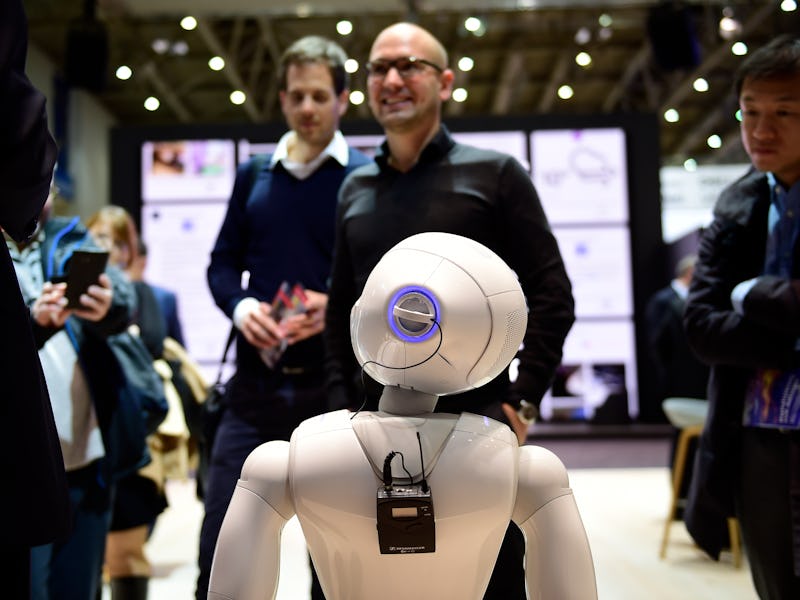Tomorrow's Household Robots Will Be Trained In VR Simulations of Homes
Training A.I. by playing house.

When you think “machine learning,” it’s almost instinctual to picture a computer plowing through unimaginable amounts of data, crunching endless swathes of numbers looking to make connections unlike any person would ever think to make.
But a group of scientists from Canada had a different idea: Why not teach them to play house?
This led them to create tens of thousands of simulated homes where A.I. can learn how to manipulate the environments within them. They call this virtual playground HoME, or Household Multimodal Environment. Programmers can set up puzzles for A.I. to solve within various “home” environments, which could be anything from moving a couch to arranging chairs.
“Humans learn from combining info across different modalities: vision, language, and physics,” Ethan Perez, a deep learning researcher at the University of Montreal, tells Inverse in a Skype call. “As machine learning has advanced it’s been able to handle all of these individually. Now it seems ripe to actually bring all of these into a single setting where A.I. can actually try to learn what ‘heavy’ means interactively.”
In a paper Perez and his team will be presenting at NIPS 2017 — an A.I. conference held this week in Long Beach, California — the researchers explain how they used a dataset of 45,000 unique 3D home layouts to create a virtual gym for AI.
Some of the largest tech companies have started to train their A.I. to become more sophisticated. A prime example is Google using the classic video game Starcraft to train its DeepMind in hopes that one day, it’ll be able to beat human players.
“Other multimodal environments like DOOM or Starcraft have been really cool and useful,” Florian Golemo, a visiting PhD student at the the University of Montreal, tells Inverse. “But having environments with more real-life scenarios that don’t include a gun in front of you or where you have to command Zerglings could really be practical.”
All of this was made possible by the SUNCG dataset, which compiled thousands of extremely detailed home layouts. Without this, the team said they would have had to rely on randomly generated homes, which have been less ideal for the A.I. to practice in.
Golemo, who has a background in robotics, believes HoME is a great way to train household robots in the future, simply because of how realistic the team’s simulation is. He explains that while there are other environments that have been used to train bots, HoME’s is the most true to how a house would look in real life.
For now, the creators of HoME are making sure future users of their product have all of the tools necessary to set up a ton of tests inside these house simulations. Who knew that a state-of-the-art A.I. trainer would look so much like an old version of The Sims?
This “Minitaur” robot can open doors, walk on ice, and basically go anywhere.